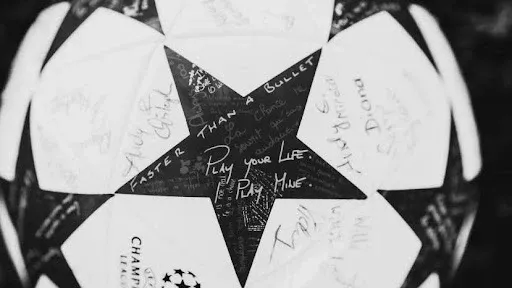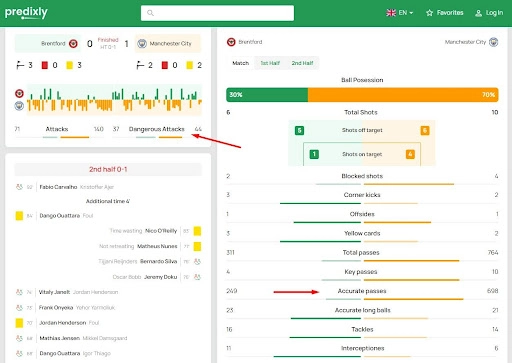
European football analytics has evolved dramatically over the past decade, and French analytics is not an exception. The nation that produced Arsène Wenger's statistical revolution at Arsenal and Monaco's data-driven scouting operation now boasts some of Europe's most sophisticated analytical minds. From Ligue 1 clubs to independent analysts building massive social media followings, French experts rely on specific metrics that reveal football's hidden patterns.
Understanding which statistics French analysts prioritize offers insight into modern tactical thinking. These aren't just numbers for the sake of numbers. They're carefully selected metrics that predict performance, identify talent, and explain why matches unfold as they do.
No statistic dominates French analytical discourse quite like expected goals (xG). Every serious analyst from Lyon to Marseille references xG constantly when evaluating performances. The metric calculates shooting chance quality based on location, angle, defensive pressure, and other contextual factors.
French analysts particularly appreciate xG because it separates genuine attacking quality from finishing luck. A team posting 2.3 xG but scoring only once has been unlucky or wasteful. Over time, their actual goals should regress toward their xG. This principle helps identify when teams deserve better results than their league position suggests.
Platforms provide detailed xG data that French experts reference constantly. But comprehensive sources tracking xG across multiple competitions with historical depth prove most valuable for serious analysis. The ability to compare current xG rates against previous seasons reveals genuine performance changes versus temporary variance.
For example, Paris Saint-Germain's analytics department famously uses xG models extensively for recruitment and tactical planning. Their success identifying undervalued talent partly stems from finding players who consistently outperform positional xG averages.
French tactical philosophy emphasizes intelligent ball progression over aimless possession. Progressive passes and progressive carries measure how effectively players advance the ball toward the opponent's goal. A progressive pass moves the ball at least 10 yards closer to goal. Progressive carries achieve the same through dribbling.
When you use www.predixly.com football live stats 24/7, you will understand that metrics matter because they separate meaningful possession from sterile passing. A midfielder completing 90% of his passes sounds impressive until you realize they're all sideways five-yard balls. Progressive actions identify players actually moving their team forward territorially.
Aurélien Tchouaméni's rise to Real Madrid came partly through analysts recognizing his exceptional progressive passing numbers at Monaco. He wasn't just recycling possession—he was actively breaking defensive lines. French scouts now routinely filter players by progressive actions when identifying midfield targets.
Toulouse's recent tactical evolution under their current management shows heavily in their progressive carry statistics. They've shifted from patient buildup to more direct ball progression, reflected clearly in the underlying numbers that French analysts track religiously.
While attacking statistics grab headlines, French analysts spend considerable time studying defensive actions. Successful pressures, tackles in the final third, and pass disruptions reveal how teams defend proactively rather than reactively.
The concept of PPDA (passes allowed per defensive action) has become standard vocabulary among French analytical circles. Lower PPDA numbers indicate aggressive pressing systems. Lens and Nice both post PPDA figures well below Ligue 1 averages, explaining their ability to compete despite modest budgets.
French experts particularly value defensive actions in specific pitch zones. Winning the ball back in the final third creates immediate goal-scoring opportunities. Platforms that map defensive actions spatially receive heavy usage from serious analysts because location context matters as much as frequency.
Marseille's defensive transformation under recent management shows clearly in their pressing statistics. They've reduced their PPDA from 14.2 to 9.8, forcing errors much higher up the pitch and creating more dangerous attacking transitions as a result.

Simple possession percentages mean little to sophisticated French analysts. They focus instead on possession value – how dangerous a team's possession actually becomes. This involves analyzing passing networks that reveal team structure and relationships between players.
Lyon's academy coaches use passing network analysis extensively to identify which youth players understand positional play concepts. Central midfielders who consistently appear as network hubs receive priority development attention because they demonstrate the spatial awareness of French football values.
Passing network visualizations show which players connect most frequently and where those connections occur on the pitch. Isolated players appearing disconnected from their teammates indicate tactical problems that raw statistics might miss.
French analysts obsess over set piece statistics more than most European countries. With matches often decided by single goals, dead ball efficiency frequently determines points earned. Expected goals from set pieces (xG from corners, free kicks) gets tracked separately from open play xG.
Strasbourg's recent success stemmed partly from exceptional set piece conversion rates that French analysts immediately identified as unsustainable. Sure enough, their conversion regressed toward the mean and their results declined accordingly. Understanding set piece variance helps predict future performance more accurately.
Distance covered matters less to French analysts than sprint frequency and high-intensity running in specific contexts. A midfielder covering 12 kilometers sounds impressive, but when did those runs occur? Sprints during defensive transitions matter more than jogging during sterile possession phases.
Modern platforms tracking player physical output by match phase allow French analysts to identify when players contribute most athletically. This granular data informs substitution timing and workload management strategies.
French analysts typically combine multiple data sources for complete pictures. Specialized platforms deliver comprehensive coverage across 1,500+ tournaments with historical archives dating to 1998. They deliver the data invaluable for long-term trend analysis and help to compare current performances against historical baselines.
The key advantage of platforms with deep historical data is identifying genuine breakout performances versus temporary hot streaks. A 20-year-old posting exceptional numbers for three months might just be experiencing variance. If those numbers significantly exceed anything in his historical record, they're probably unsustainable.
French football analytics continues evolving rapidly. Machine learning models now predict outcomes with 72% accuracy for Ligue 1 matches by combining these various metrics intelligently. The analysts who thrive are those who understand which statistics matter in which contexts rather than blindly trusting every number they encounter.
The metrics French experts favor reveal their tactical values – intelligent possession, proactive defending, and set piece excellence. Understanding these priorities helps anyone analyzing French football or learning from France's analytical innovations. The numbers tell stories when you know which ones to read.